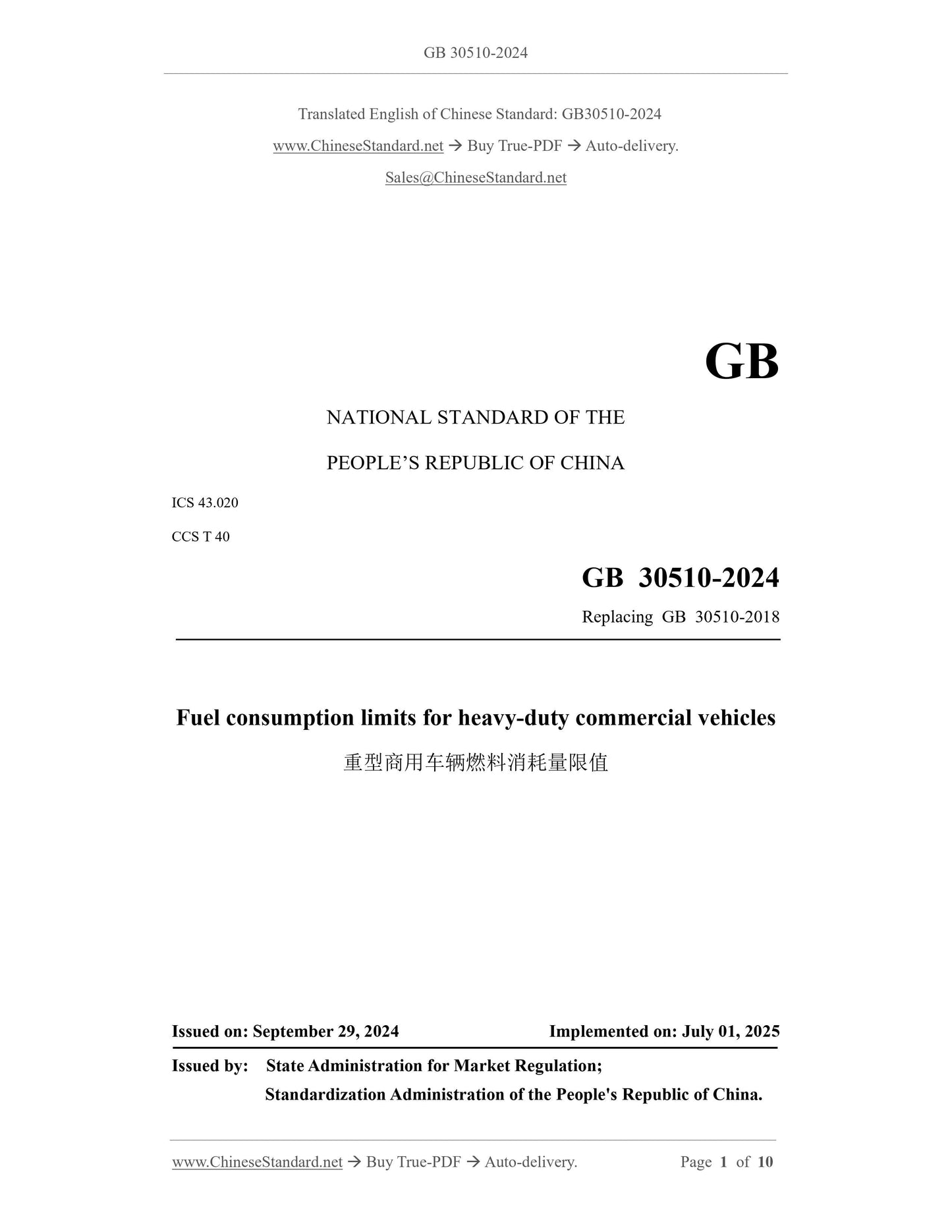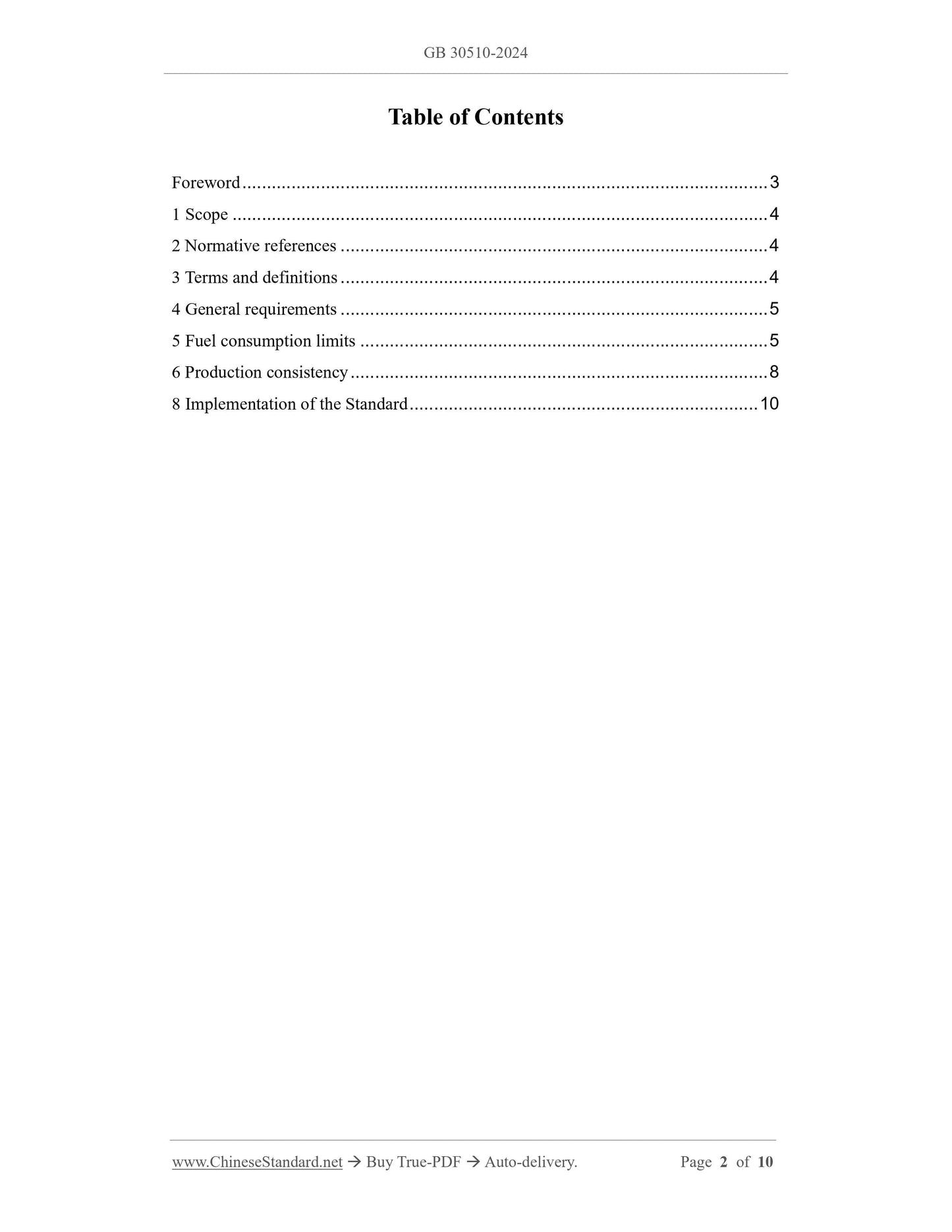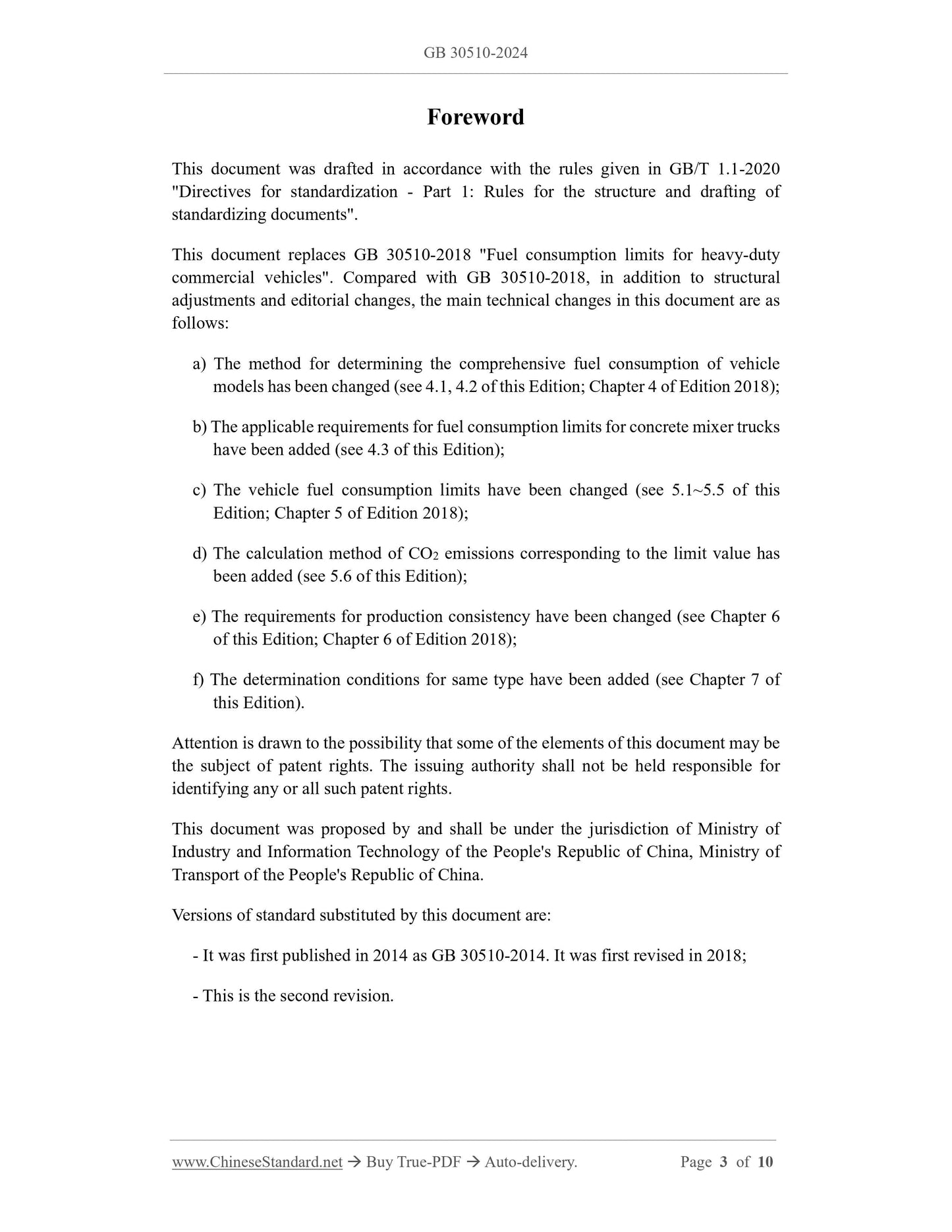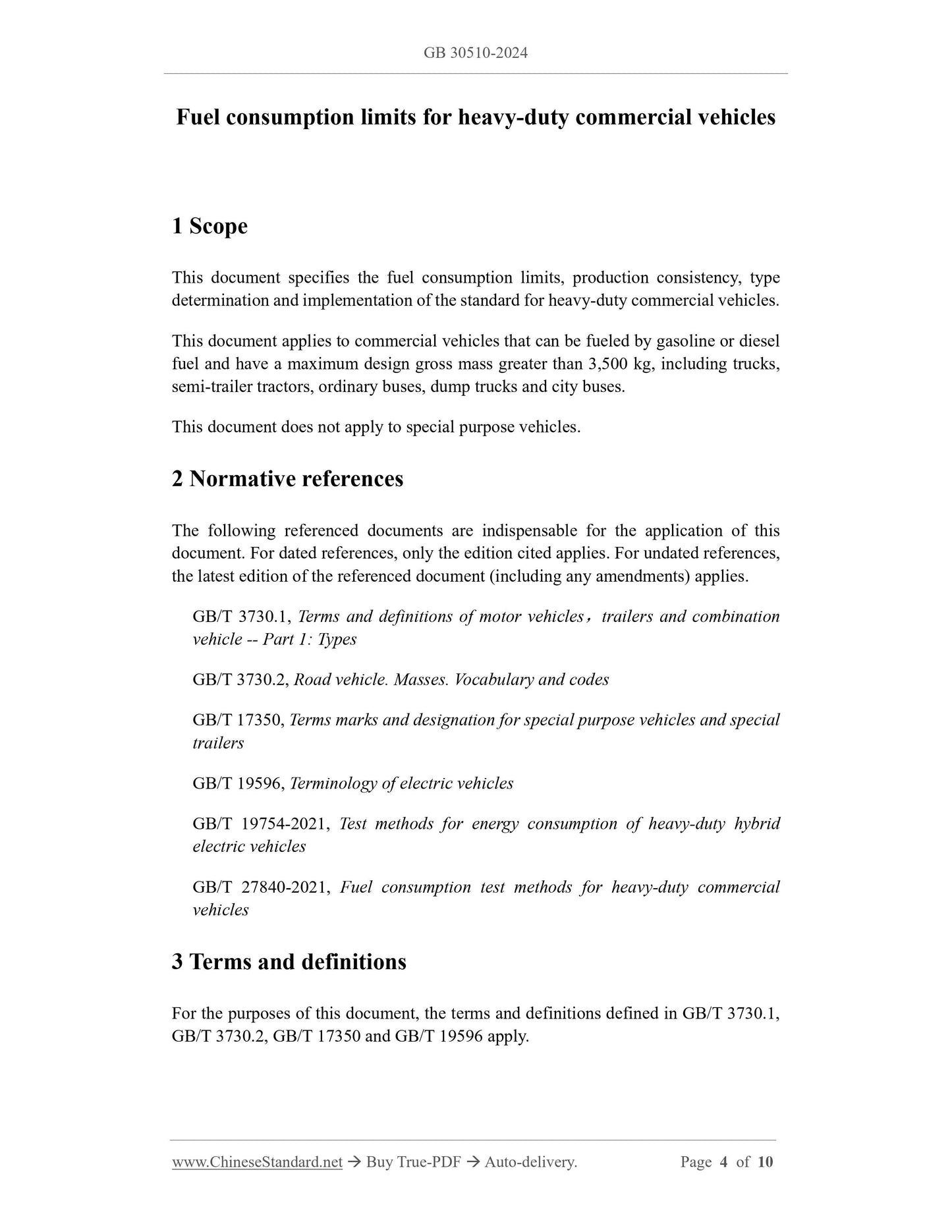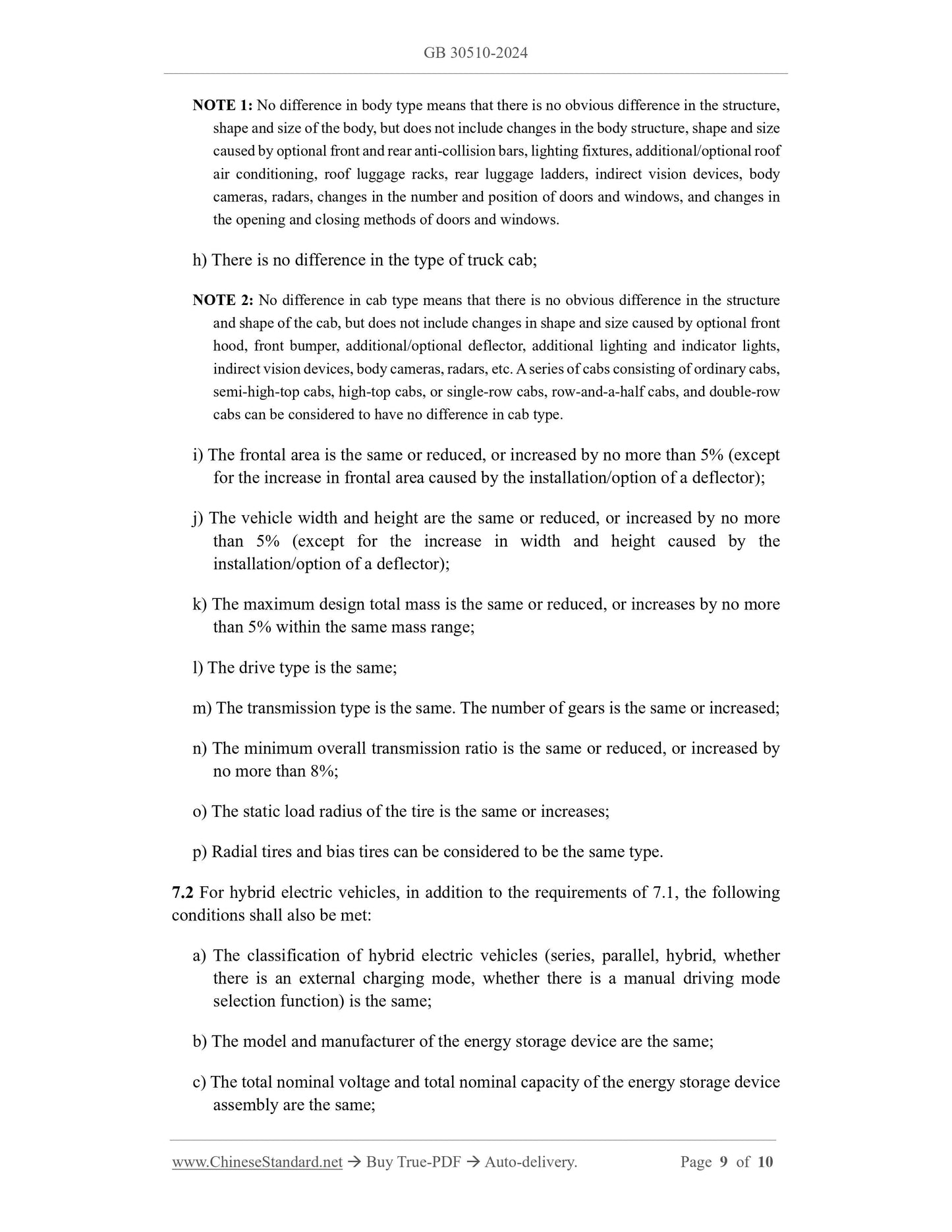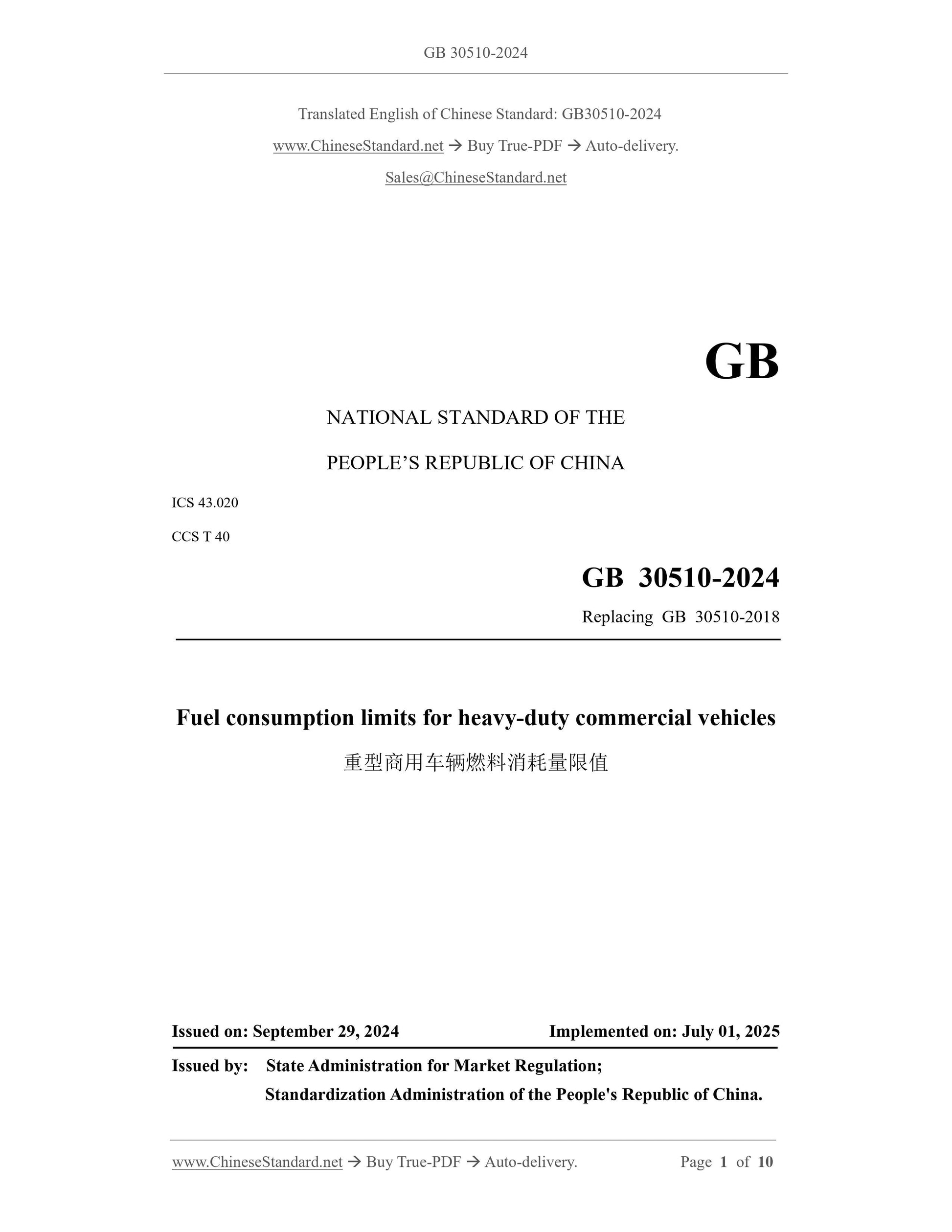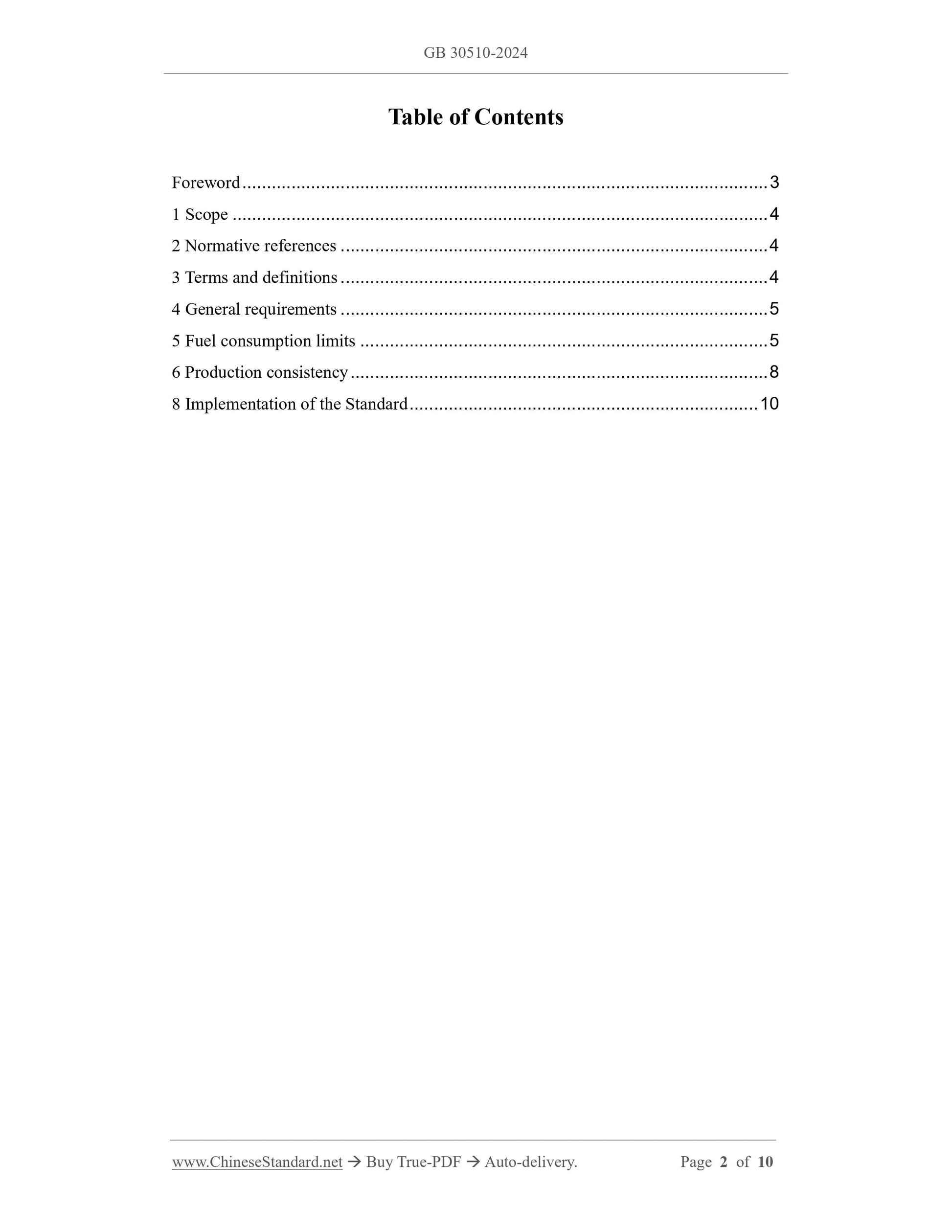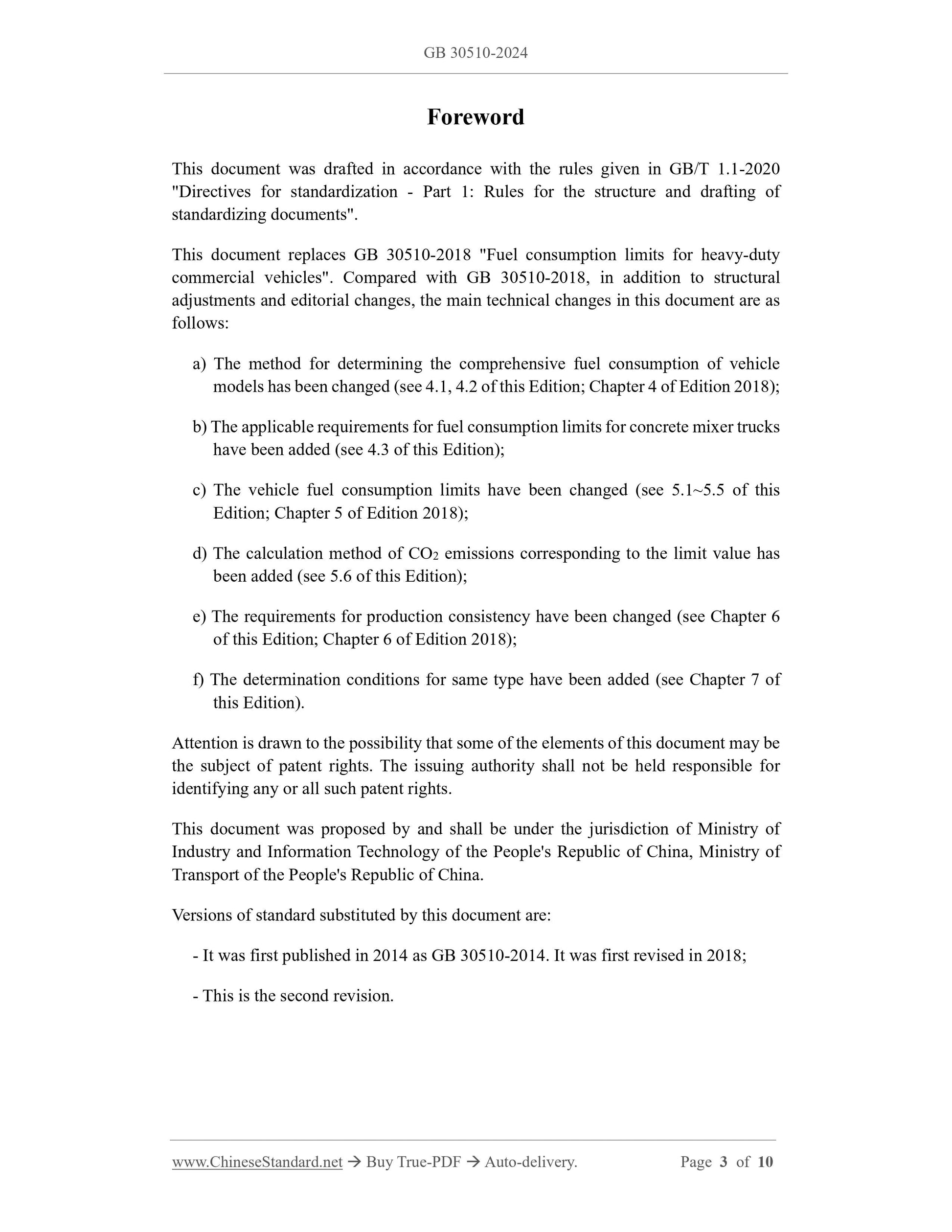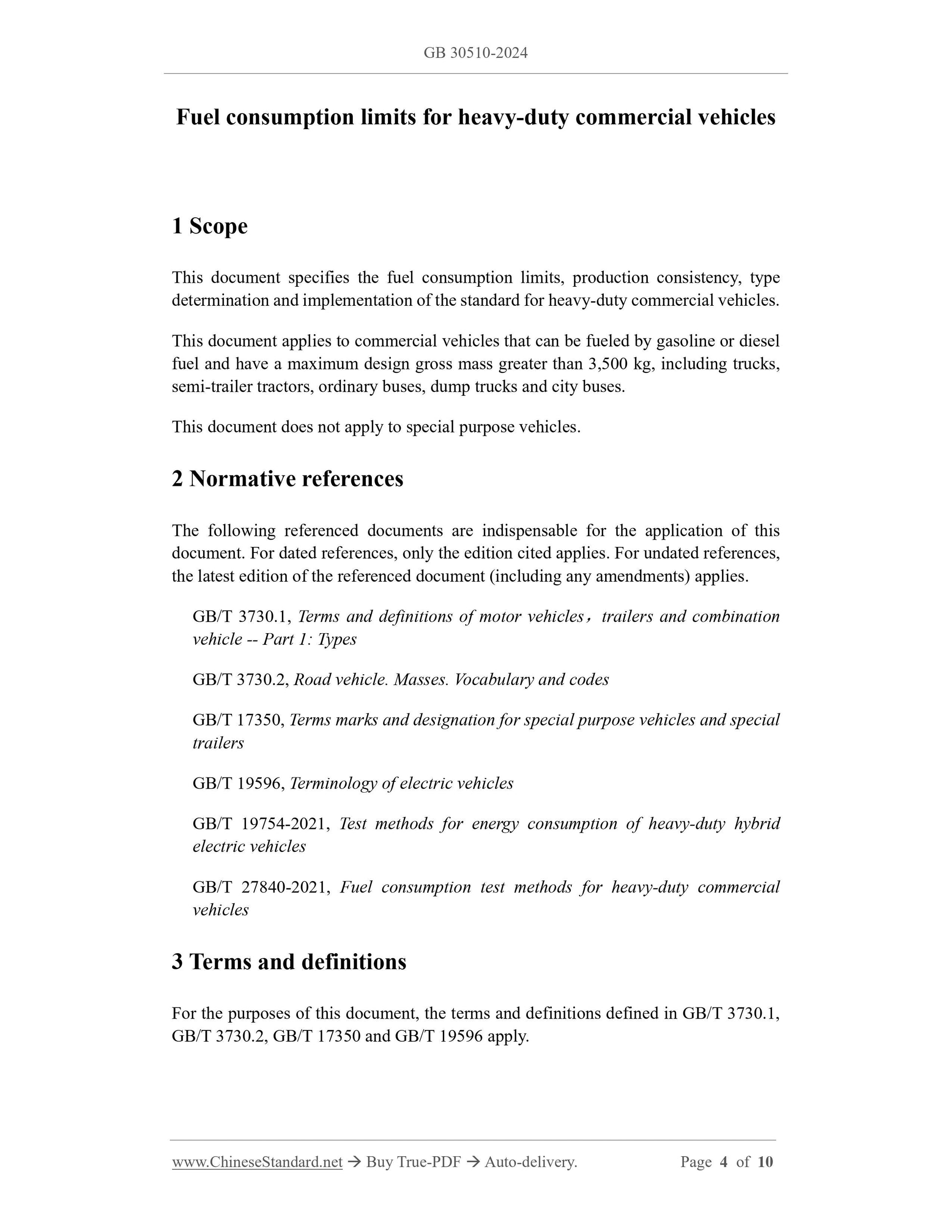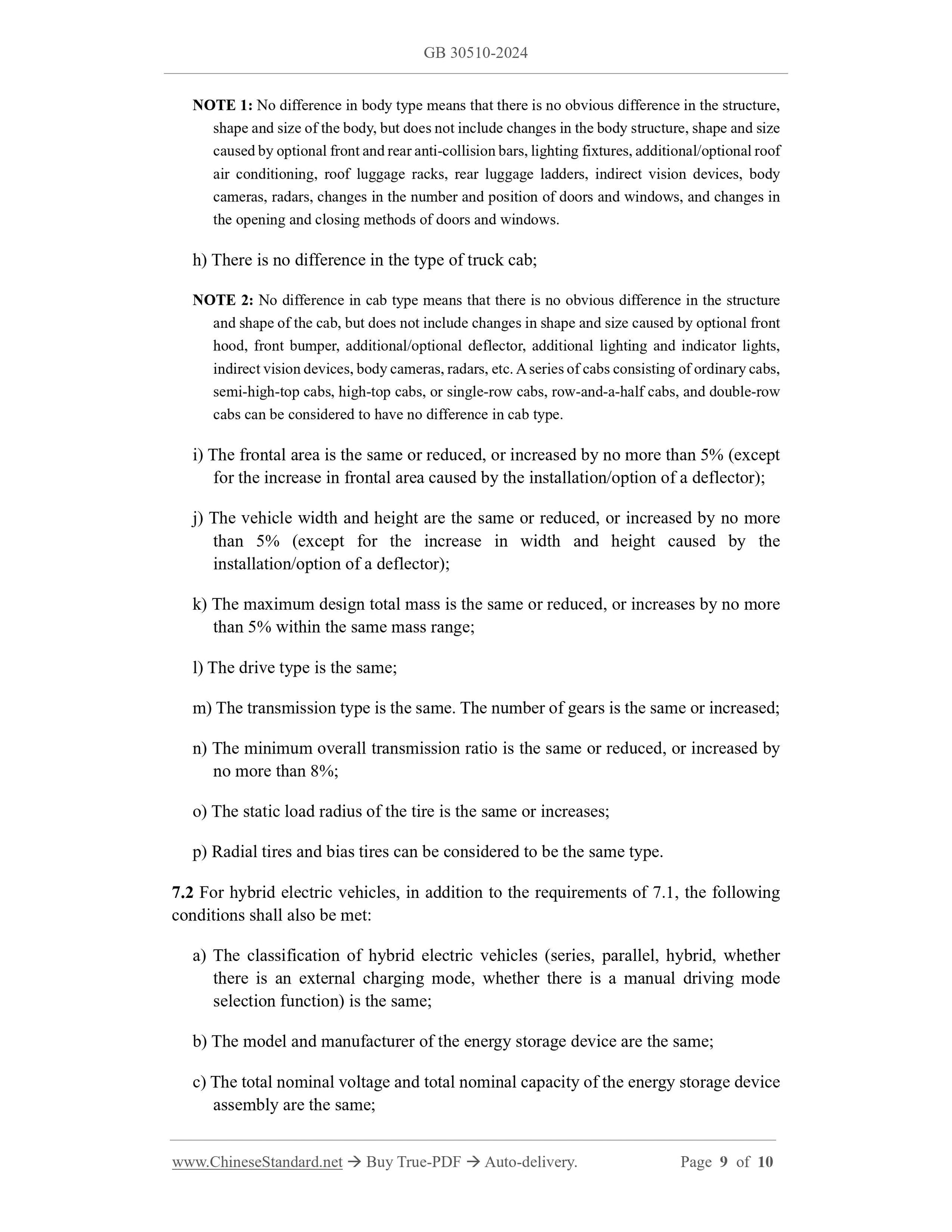1
/
of
5
www.ChineseStandard.us -- Field Test Asia Pte. Ltd.
GB 30510-2024 English PDF
GB 30510-2024 English PDF
Regular price
$185.00
Regular price
Sale price
$185.00
Unit price
/
per
Shipping calculated at checkout.
Couldn't load pickup availability
GB 30510-2024: Fuel consumption limits for heavy-duty commercial vehicles
Delivery: 9 seconds. Download (and Email) true-PDF + Invoice.Get Quotation: Click GB 30510-2024 (Self-service in 1-minute)
Newer / historical versions: GB 30510-2024
Preview True-PDF
Scope
This document specifies the fuel consumption limits, production consistency, typedetermination and implementation of the standard for heavy-duty commercial vehicles.
This document applies to commercial vehicles that can be fueled by gasoline or diesel
fuel and have a maximum design gross mass greater than 3,500 kg, including trucks,
semi-trailer tractors, ordinary buses, dump trucks and city buses.
This document does not apply to special purpose vehicles.
Basic Data
| Standard ID | GB 30510-2024 (GB30510-2024) |
| Description (Translated English) | Fuel consumption limits for heavy-duty commercial vehicles |
| Sector / Industry | National Standard |
| Classification of Chinese Standard | T40 |
| Classification of International Standard | 43.020 |
| Word Count Estimation | 10,148 |
| Date of Issue | 2024-09-29 |
| Date of Implementation | 2025-07-01 |
| Older Standard (superseded by this standard) | GB 30510-2018 |
| Issuing agency(ies) | State Administration for Market Regulation, China National Standardization Administration |
Share
